Kia Sportage: Input Speed Sensor
Description and Operation
Description
Input speed sensor is a vital unit that measures the rate of rotation of the input shaft inside the transaxle and delivers the readings to the TCM. The sensor provides critical input data that's used in feedback control, damper clutch control, gear setting control, line pressure control, clutch activation pressure control, and sensor fault analysis.
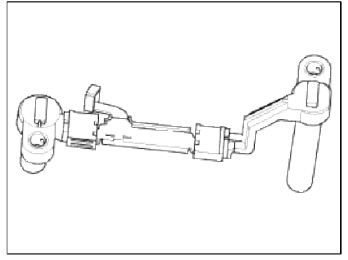
Specifications
Specifications
Type: Hall effect sensor
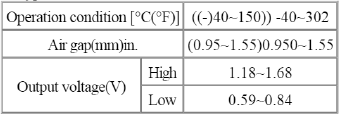
Schematic Diagrams
Circuit Diagram
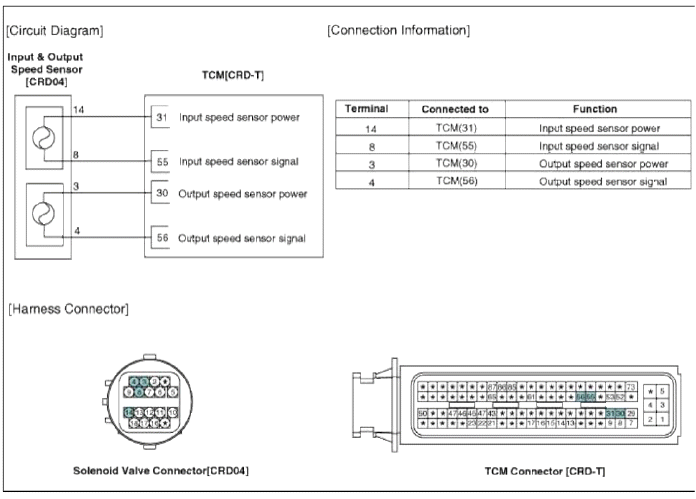
Troubleshooting
Signal Waveform
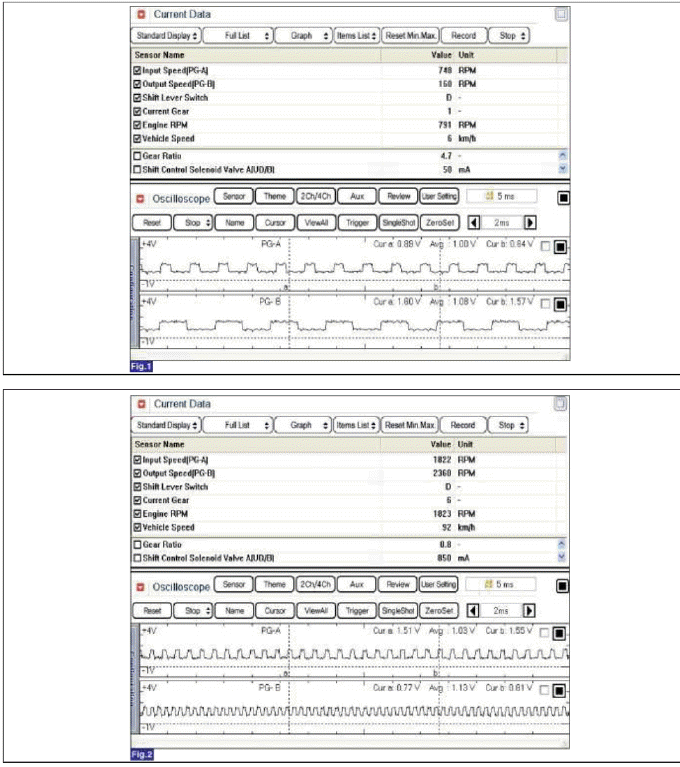
Fig 1) Input/Output speed sensor at low speed
Fig 2) Input/Output speed sensor at high speed
Repair procedures
Inspection
1. Check signal waveform of Input & output speed sensor using the GDS.
Specification: Refer to "Signal Wave Form" section.
Removal
1. Remove the battery and the battery tray. (Refer to "Charging system" in EE group.)
2. Remove the under cover (A).
Tightening torque: 19.6 ~ 24.5 N.m (2.0 ~ 2.5 kgf.m, 14.5 ~ 18.1 lb-ft)
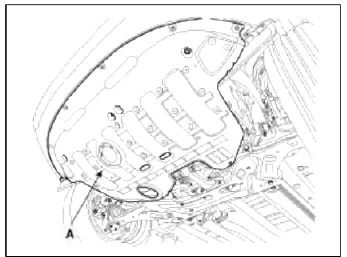
3. Replace new gasket and the plug after draining the automatic transaxle fluid by removing the drain plug. (Refer to "Hydraulic system (Fluid)" in this group)
4. Remove the valve body cover (A) and eyebolt (B).
Tightening torque:
(A) 13.8 ~ 14.7 N.m (1.3 ~ 1.5 kgf.m, 9.4 ~ 10.8 lb-ft)
(B) 34.3 ~ 44.1 N.m (3.5 ~ 4.5 kgf.m, 25.3 ~ 32.6 lb-ft)
CAUTION
Always replace the gasket of the eyebolt use new one whenever loosening eyebolt.
NOTE
Remove installation bolts in the engine compartment first and then remove others under the vehicle.
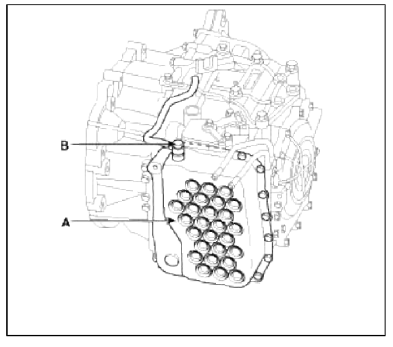
5. Remove the plate and the detent spring (A) after removing the bolt
Tightening torque: 24.5 ~ 35.3 N.m (2.5 ~ 3.6 kgf.m, 18.1 ~ 26.0 lb-ft)
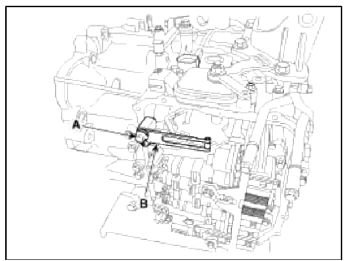
6. Remove the bolt (3ea) after disconnecting the solenoid valve connector (B) and the oil temperature sensor connector (A).
Tightening torque: 9.8 ~ 11.8 N.m (1.0 ~ 1.2 kgf.m, 7.2 ~ 8.7 lb-ft)
CAUTION
Be careful not to damage the harness lock connector.
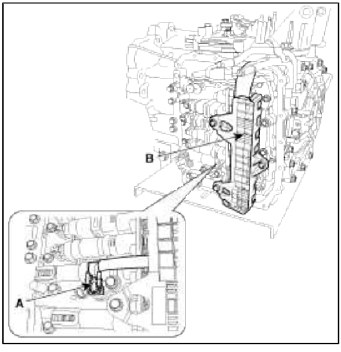
7. Remove the valve body assembly (A).
Tightening torque: 9.8 ~ 11.8 N.m (1.0 ~ 1.2 kgf.m, 7.2 ~ 8.7 lb-ft)
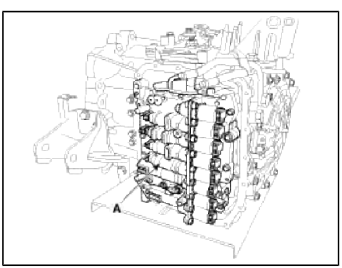
8. Disconnect the input & output speed sensor connector (A).
9. Remove the input & output speed sensor (B) after removing the bolts(2ea).
Tightening torque: 9.8 ~ 11.8 N.m (1.0 ~ 1.2 kgf.m, 7.2 ~ 8.7 lb-ft)
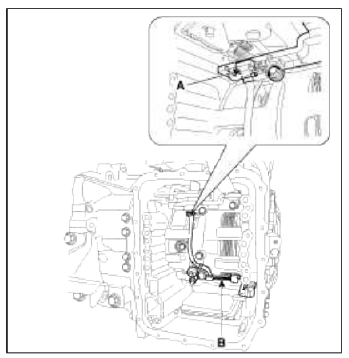
Installation
1. Installation is the reverse of removal.
NOTE
After replacement or reinstallation procedure of the valve body assembly, must perform procedures below.
- Continue to apply liquid gasket at application points at the valve body cover with Ø2.5mm (0.0984in.) thickness.
Liquid gasket Part name : Threebond 1281B or LOCTITE FMD-546
- Adding automatic transaxle fluid. (Refer to "Hydraulic system (Fluid)" in this group)
READ NEXT:
 Output Speed Sensor
Output Speed Sensor
Description and Operation
Description
The output speed sensor is a vital unit that measures the rate of rotation of
the transaxle's turbine shaft and output
shaft, and delivers the read
 Torque Converter Control Solenoid Valve (T/CON_VFS) | 26 Brake Control Solenoid Valve (26/B_VFS)
Torque Converter Control Solenoid Valve (T/CON_VFS) | 26 Brake Control Solenoid Valve (26/B_VFS)
Description and Operation
Description
Torque converter control solenoid valve (T/CON_VFS) is attached to the valve body. This variable force solenoid valve directly controls the hydraulic pre
SEE MORE:
 Body dimensions
Body dimensions
Body dimension indications
Projected dimensions
The projected dimension indicates a dimension from a reference point on the
body. (Height may be different in some
cases).
Straight-line dimensions (Actual measured dimensions)
The straight-line dimension indicates a actual measured dimension be
 Air bag non-inflation conditions
Air bag non-inflation conditions
Air bags may not deploy in certain
low-speed collisions where the air bag
would not add any benefit beyond the
protection already offered by the seat
belts.
Front air bags are not designed to
inflate in rear collisions, because
occupants are moved backward by
the force of the imp
Content
- Home
- Kia Sportage - Fifth generation (NQ5) - (2022-2026) - Owner's Manual
- Kia Sportage - Second generation (JEKM) (2005-2015) - Body Workshop Manual
- Kia Sportage Third generation (SL) - (2011-2016) - Service and Repair Manual
- Sitemap
- Top articles